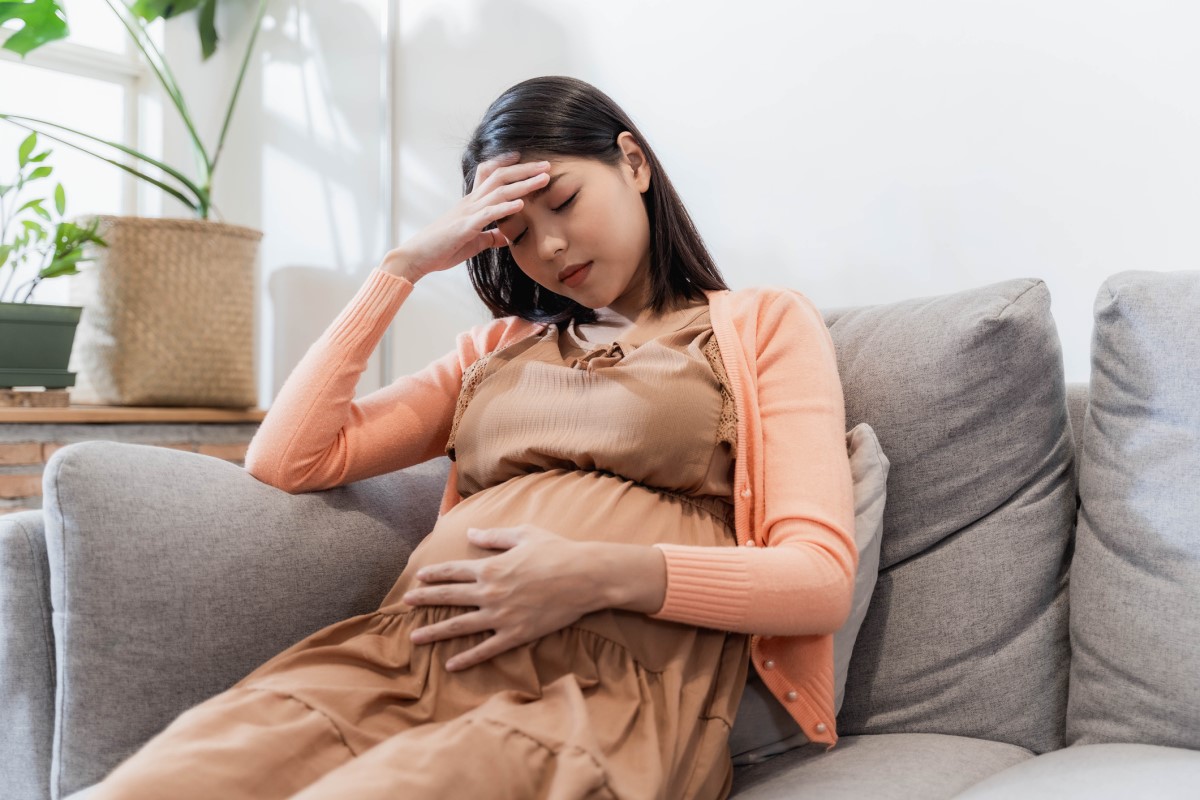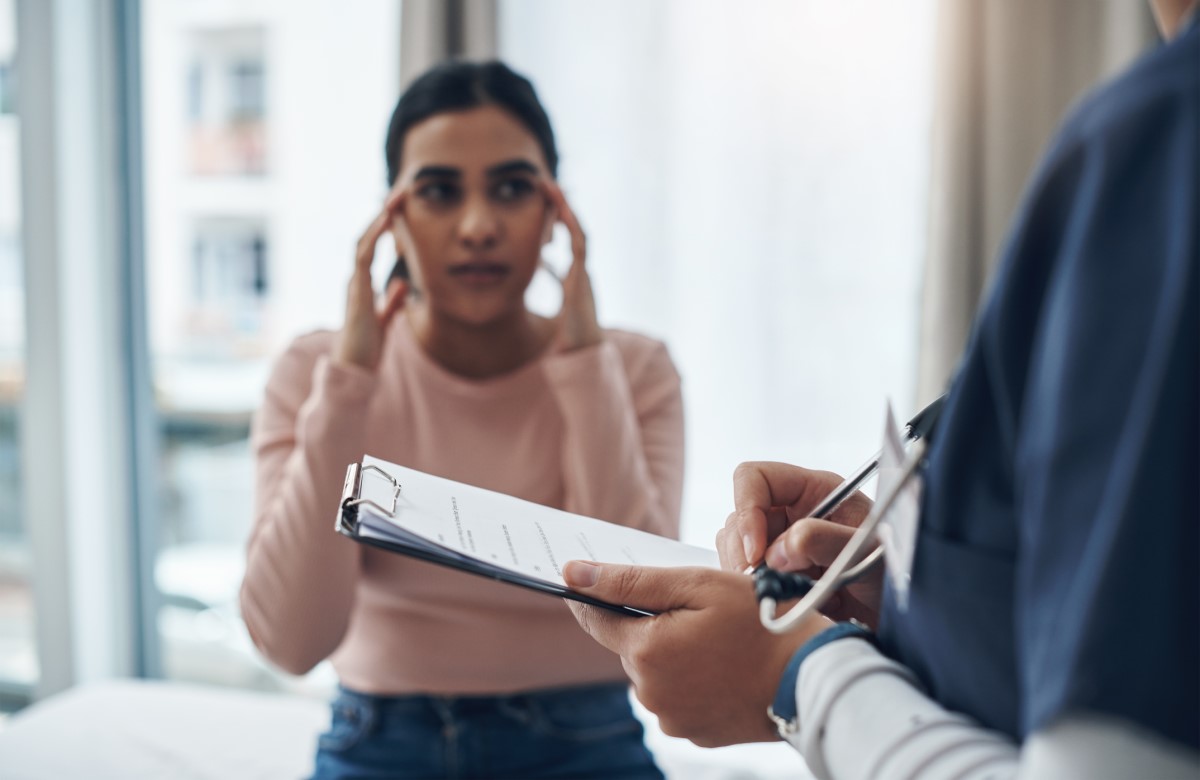- solen.sk - Headaches in a GP's office, Marta Kulichová, Chronic Pain Outpatient Department, Department of Anaesthesiology and Intensive Care Medicine, MFN and JLF UK, Martin
- vpl.sk - Expert procedures in headache
- solen.sk - MENSTRUACIAL AND PRE-MENSTRUACIAL ENTRAINMENT, Peter Špalek, Centre for Neuromuscular Diseases, Neurological Clinic of SZU, FNsP Bratislava - Ružinov
- solen.sk - Headaches - Part 1, Hedviga Jakubíková, MD, Neurological and Algesiological Outpatient Clinic, Prešov
- neurologiepropraxi.cz - PREVENTIVE TREATMENT OF MIGRAINE, h. doc. doc. MUDr. Vladimír Donáth, PhD., Department of Neurology, F. D. Roosevelt Hospital, Banská Bystrica
- solen.sk - Do CGRP monoclonal antibodies represent progress in migraine prophylaxis? Doc. RNDr. Ingrid Tumová, CSc., Faculty of Pharmacy, Department of Pharmacology and Toxicology, Comenius University in Bratislava
- americanmigrainefoundation.org - What to Know About the New Anti CGRP Migraine Treatment Options
- ncbi.nlm.nih.gov - Calcitonin Gene-Related Peptide (CGRP) and Migraine
- ncbi.nlm.nih.gov - Red flags in headache care
What are the common causes of headaches in women and how to treat them?

Headache is common in women. Often it is a migraine. The trigger is also hormonal changes and sometimes other causes. How to help yourself?
Article content
A woman complaining of a headache is not a rare complaint. It is not always just an excuse. Women are prone to more frequent headaches.
The most common cause of unbearable headaches is clearly migraine.
Migraine is overwhelmingly a woman's problem, but it does not avoid men either. Paradoxically, boys lead the way in the incidence of migraine in childhood. Women suffer from migraine three times more often than men, and this ratio increases even more after the age of 40.
Why this is so and why women suffer from migraine more often, you will find out in this article.
Occasional headaches don't have to be migraines
Migraine is the third most common condition in the world. Up to a fifth of the population experiences recurrent attacks of intense, unilateral, sharp, usually throbbing headaches characteristic of the area behind the eye and in the temples.
This is the most severe type of pain. It represents a separate diagnosis that falls into the hands of a neurologist.
Among women, there are also migraineurs who suffer such severe attacks that they remain incapacitated for several days. Migraine days can be more than 8 per month. This disease has a significant impact on the socio-economic sphere of not only the woman and her family, but also on the whole of society.
In addition to headaches, the attacks are accompanied by nausea (feeling like vomiting), photophobia (intolerance to light) and various other neurological, gastrointestinal and vegetative symptoms.
Migraine with aura. What does it mean?
Approximately half of women with migraine suffer from unpleasant symptoms that are a kind of harbinger of an impending migraine.
A condition that precedes the actual headache by about 5 to 60 minutes is called an aura.
The aura has various manifestations. It can be visual manifestations such as flashing lights, flashing dots in front of the eyes, rainbow streaks, etc.
Tingling and tingling around the mouth and limbs, difficulty in speaking and articulation, a wooden tongue feeling, drowsiness, yawning, extreme sweet tooth, depression and general restlessness are also common.
Is it important to record individual bouts of pain?
If you experience headaches too often and suspect a migraine, start recording the information in a "migraine diary".
This information will be useful not only for you, but also for your doctor. He or she will ask you many questions during your visit.
You probably won't remember off the top of your head the exact number of migraine attacks per month, the time of your menstrual cycle, the connection to certain foods or stress, whether and what medications you took, or whether the pain went away spontaneously.
A migraine diary will simplify and speed up the overall diagnosis of migraine. It will make it easier to prescribe the appropriate treatment for you, or to start prophylactic (preventive) treatment that should reduce the number of migraine days in a month.

I don't often take analgesics. Can I prevent a migraine before it starts?
If you keep a migraine diary, also record food, drink, alcohol, social events and other factors that we call "migraine triggers".
If you notice that a headache follows and recurs after a certain food, simply cut it out of your diet.
Here are some examples of migraine triggers:
- Insufficient sleep
- Excessive heat and humidity in the environment
- Chocolate
- hard cheeses (due to tyramine content)
- alcoholic beverages
- citrus fruits
- nuts
- Excessive caffeine intake, but also sudden caffeine withdrawal
- certain drugs, e.g. contraceptives
- excessive use of analgesics
- light street drugs
- intense sensory stimuli, such as harsh blinding light, flashing light, e.g. lights at a concert or disco in combination with excessive noise
- intense odours, e.g. cigarette smoke
- prolonged exposure to cold
Menstrual and premenstrual migraine
Adult females clearly lead in the incidence of migraine. However, in the pre-pubertal period, the proportion of girls and boys with migraine is balanced. In this period of sexual maturation, 4% of both sexes suffer from migraine.
Once females reach puberty, this ratio changes dramatically and females no longer lead.
The score is 17% female to just 5% male.
This is also proof of how much the actual cause of migraine is dependent on female sex hormones and their fluctuations during the cycle.
The intensity of pain in menstrual migraine is stronger than in non-menstrual migraine.
The menstrual cycle is regulated by interactions between the hypothalamus, pituitary gland, ovaries, uterus and sex hormones.
Estrogen and progesterone, the main female sex hormones, affect central serotonin, opioid and beta-adrenergic receptors. They can alter their activity.
A sharp drop in estrogen during the luteal phase of the menstrual cycle is a major trigger of menstrual migraine.
This fact is supported by the fact that women experience a marked improvement in migraine during pregnancy. This is due to a gradual increase in estrogen levels, which are consistently maintained at a high level throughout pregnancy.
Interesting information:
How does the menstrual cycle work? Cycle length and phases + symptoms
There are 3 types of migraines depending on when during the menstrual cycle the migraine occurs:
1. Non-menstrual migraine
The headache comes on at any time during the menstrual cycle, with no exact monthly recurrence.
It may or may not be accompanied by aura.
2. Premenstrual migraine
It is characterized by migraine attacks that come 7 days to 1 day before menstruation.
Women experience it as part of the so-called PMS or premenstrual syndrome.
In addition to migraine, premenstrual syndrome is characterized by sadness, depression, anxiety, lack of focus, laziness, lack of interest, slow thinking, lower back pain, and painful and swollen breasts. Migraine usually lacks an aura.
Read also:
How to manage mood swings during menstruation? 5 tips for mental well-being
3. Menstrual migraine
Migraine attacks occur between 1 day before the start to 4 days after the start of menstruation.
Intermittent migraine attacks may also occur in menstrual migraine without a temporal connection to menstruation.

Headache in pregnancy
Headaches in pregnancy are closely related to hormonal changes. Therefore, mothers-to-be "enjoy" them especially in the first weeks of pregnancy.
Over time, the headaches ease and may even disappear completely. Some women who suffered from migraines during menstruation before pregnancy can get rid of headaches even in the postpartum period.
A slightly more serious symptom is headaches in so-called pre-eclampsia.
Pre-eclampsia is a condition that can occur later in pregnancy, usually after the 20th week of pregnancy. It is one of the features that distinguishes it from headaches during natural hormonal fluctuations.
Other symptoms include high blood pressure, protein in the urine, swelling of the lower limbs and increased risk to both mother and baby.
If you have other symptoms besides pregnancy headaches, talk to your gynecologist about further detailed tests that lead to a diagnosis of pre-eclampsia. These may include symptoms such as blurred or foggy vision, photophobia, nausea and vomiting.
- Headache in pregnancy: what causes it and what to do for pain?
- What is pre-eclampsia? Does it pose a risk to pregnancy?
- How to recognize pre-eclampsia and its symptoms in pregnancy? Know the risks

I have been diagnosed with migraine. what are my treatment options?
If your neurologist has diagnosed migraine as the cause of your headaches, you have several treatment options.
Migraine is a condition that requires treatment. It doesn't have to be solved just by repeatedly eating analgesics.
Prophylactic (preventive) treatment
Have you tried all the evasive manoeuvres, eliminated provoking foods, slept like a baby, tried to limit stress, and yet the migraine still bothers you? You still have the option of asking your doctor about preventive treatment for migraine.
When is it appropriate to start preventive treatment?
Prophylactic treatment is appropriate for you if...
- ...you experience migraine attacks more often than two to three times a month.
- ...are very severe and limit your normal daily activities.
- ...the attacks last more than 48 hours.
- ... you have one of the complications of migraine (hemiplegic migraine, basilar migraine or migraine infarction).
- ... even the strongest painkillers, such as triptans, do not work to relieve the pain.
- ... you cannot take strong pain medications because you have other medical comorbidities or side effects.
Regular preventive treatment can reduce the number, duration and severity of migraine attacks by at least 50%.
What medicines does preventive treatment include?
The most commonly used medications are those that have high efficacy and minimal side effects.
Examples include:
- Beta-blockers act through several pathways and receptors. They affect pain and autonomic symptoms in migraine.
- Amitriptyline is a tricyclic antidepressant. The prophylactic effect of this drug occurs before the antidepressant effect.
- Valproate is an anticonvulsant with a very good prophylactic effect.
- Calcium channel blockers (verapamil, diltiazem, nimodipine).
- Serotonin antagonists (methysergide, cyproheptadiene).
Treatment is long-term and lasts at least 6-12 months.
When a migraine attack is in full swing...
If an unbearable headache and nausea have already appeared, the only option is to take a painkiller. Women who have a migraine with aura can take a painkiller already during the aura. This will significantly relieve or completely suppress the pain before it erupts.
Weaker migraines can also be well managed with simple analgesics such as paracetamol or spasmoanalgesics.
The combination of a simple analgesic and an antiemetic is effective in managing nausea or vomiting during a migraine attack.
The most commonly used preparations are ibuprofen, diclofenac, nimesulid, naproxen or indomethacin. The disadvantage is their gastrointestinal side effects.
Slightly stronger fighters against migraine pain are the so-called triptans. The reason for their action is their action on the trigeminovascular system.
Several types of triptans are available, e.g. sumatriptan, eletriptan, zolmitriptan, rizatriptan and others.
The difference between them is mainly in the speed of onset of action and the incidence of side effects.
For triptans to have the best and fastest effect, they should be taken as soon as possible after the onset of the headache. It is best to take triptans the moment you feel the pain is already coming on.
What if the commonly available medicines have failed for you? Another option is modern biological treatment
As of 2018, the world's most advanced preventive treatment for migraine is available.
It is a monoclonal antibody that is effective in preventing both episodic and chronic migraine.
In general, the treatment is suitable for adult patients who have at least 4 migraine days during a month.
The principle treatment is a monoclonal antibody directed against CGRP (calcitonin gene or CGRP receptor), the protein responsible for migraine.
Three products have been approved so far, namely erenumab, fremanezumab and galcanezumab (not yet available in clinical practice). A fourth product, eptinezumab, is in the process of FDA approval.
What is CGRP?
CGRP is a neuropeptide that is released from nerve endings around blood vessels near the Vth cranial nerve (trigeminal nerve). The release of this neuropeptide dilates (stretches) blood vessels and vascular sheaths in the brain, activates immune inflammatory cells, and additionally participates in the transmission of the pain signal itself.
Monoclonal antibodies target either this peptide or its receptors. They bind to its receptor. They block its activity and function in transmitting pain and sterile inflammation in the migraine process.
These monoclonal antibodies have a high specificity. This ensures both a therapeutic effect and a low incidence of side effects. This is a huge advantage in long-term use.
Relief from migraine can be felt within approximately one month of starting treatment.
All types of products are administered subcutaneously, i.e. with a thin needle under the skin (similar to insulin or fraxiparin), in a home environment at precisely defined time intervals.
Adverse effects include mild reactions at the injection site such as redness, local inflammation, skin changes. Constipation is also often experienced, which can be more severe in some cases.
Muscle cramps and itching are less common.
For more information, see the article:
Biologic drugs bring innovative treatments even where conventional treatments have failed
Headaches are new to me. When should I see a doctor?
If you don't suffer from migraines, but have been experiencing headaches more often recently, it may be a symptom of another condition.
Some of the most common conditions include:
- Bacterial or viral infections, e.g. flu, strep throat, sinusitis, pneumonia
- temperature, fever
- meningitis
- diseases of the blood vessels in the brain
- brain tumours
- brain abscess
- concussion
- head trauma
- carbon monoxide poisoning
- inflammation of the teeth
- vision problems - myopia, hyperopia
- glaucoma
- high blood pressure
- panic disorder
- depression
- fatigue syndrome
If you experience these symptoms, be sure not to delay seeing a doctor:
- an unbearable headache you've never experienced before
- if you have a severe headache and are over 50 years old
- if the pain worsens after taking medication and is accompanied by vomiting
- if the pain appears suddenly after physical exertion
- you have a fever, feel drowsy, have a stiff neck and the movement of your neck causes you severe pain
- your limbs are weak, you have difficulty articulating, double vision
- if you have cancer
- if you are HIV positive
- you are taking blood thinners such as warfarin
For more information, see also the articles:
- How to distinguish a migraine from a regular headache? Symptoms and main features
- How to treat and prevent migraine + 9 natural tips for pain relief
- Headache: Sometimes it's harmless, but when is it a serious problem?
- Headache: How to get rid of it (Types of pain)
- Headache: Is a visit to the GP enough or do you need a specialist?

Interesting resources










